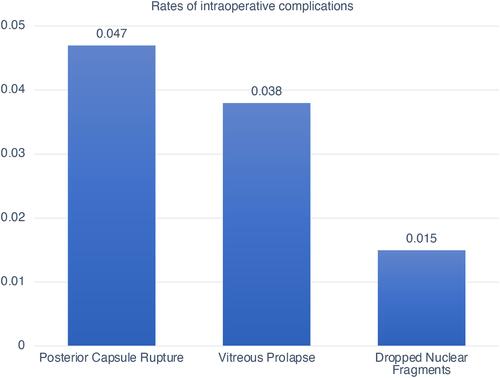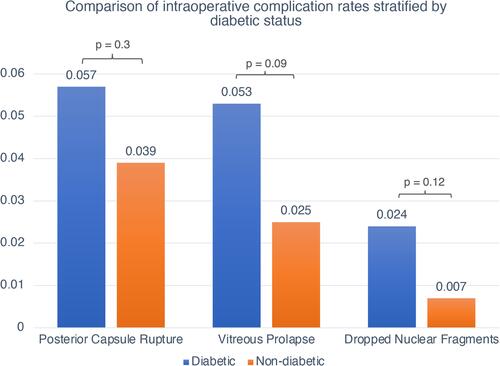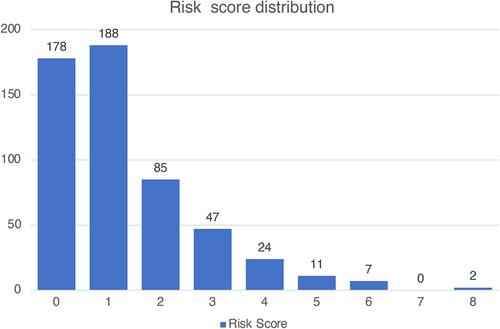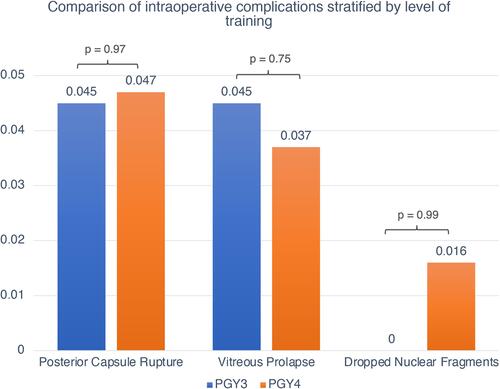Figures & data
Table 1 Preoperative Risk Factors and Their Corresponding Point of Value in Our Risk Stratification System
Figure 2 Rates of intraoperative complications. Of 530 cases, 4.7% experienced posterior capsular rupture, 3.8% had vitreous prolapse, and 1.5% developed dropped nuclear fragments requiring pars plana vitrectomy.

Figure 3 Intraoperative complication rates stratified by diabetic status. 245/530 (46.2%) eyes were in patients with diabetes. Of these, there was a trend toward higher intraoperative complication rates compared to patients without diabetes; however, differences did not reach statistical significance.



